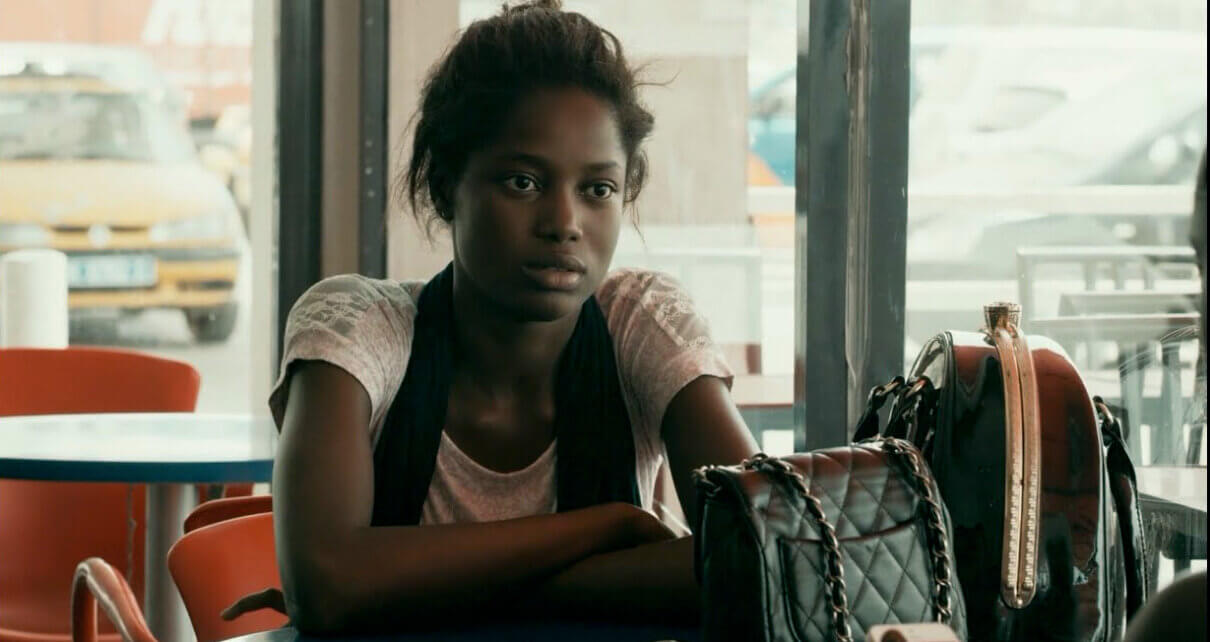The World Cinema Series returned with an analysis of the 2019 romantic drama Atlantics. An illumination of the theme “Living on the Edge: Displacement, Identity, and Resilience,” virtual discussion was hosted by Thomas Pearson, Ph.D., and led by Julius Adekunle, Ph.D., Professor in the department of History and Anthropology and Lisa Vetere, Ph.D., Associate Professor in the department of English, on Wednesday, Nov. 10.
Atlantics is about a young woman, Ada, and her partner, Souleiman. The couple struggles in Dakar, the capital city of Senegal, as they face issues of employment, class, crime, family struggles, and supernatural entities. It is the feature directorial debut of Mati Diop, who made history during the film’s premiere at Cannes as the first Black woman to direct a film featured in competition at the festival.
Diop was intrigued by the migrations of Africans in 2005 through 2006, crossing the Atlantic Ocean for Europe, Pearson explained.
She was awestruck by the hardships those on the journey faced as they traveled across the sea. The director met some of the travelers, becoming surprised to learn that poverty was driving many of them to risk their lives in order to reach Europe.
“She was astonished by their resolution to make the trip because, as one young man told her, ‘When you decide to cross the ocean, it means you’re already dead,’” Pearson recalled. “Those encounters with those young men led her to begin to make the feature film Atlantics, but she decided that rather than putting the spotlight on the men who set out to sea, she decided to focus on those who were left behind in Senegal.”
Adekunle, a specialist in sub-Saharan African history, considers the themes of the film to be culture, love, economics, religion, and immigration. The setting is Senegal, a country on the Western coast of Africa that was colonized by the French.
“If we look at what we just saw [in the film], Senegal remains relatively poor economically,” Adekunle said. “During the colonial period, the French established four communes and those were the places where the French citizens actually lived. Senegal, in a sense, was like a settler colony.”
The four communes consisted of Dakar, Saint Louis, The Island of Rufisque, and The Island of Gorée.
Poverty is not specific to Senegal, as many African countries are poor economically, Adekunle explained. Senegal has a population of approximately 15 million people, with half of the population living in poverty.
“In the rural areas, the situation is worse,” Adekunle said. “About 66 percent of the people
are considered poor. Today, Senegal is relatively stable politically, but Senegal is grappling with enormous economic challenges.”
The film opens with a typical African city, Adekunle explained. Poverty is shown through the public transportation systems and animals parading the streets.
There exist many ethnic groups in Senegal, such as the Fulani, Soninke, Wolof, Serer, and Jola.
“Even though all of these people have certain occupations, all of them own livestock, particularly the Fulani” Adekunle said. “Most live on livestock. They are specialists in livestock and they go everywhere to pasture their cattle.”
Since independence, economic realities have proven that many African countries are struggling to survive by earning a living through livestock. Historically, Adekunle explained, pastoralism has been part of the African economy and open grazing of cattle has not been effectively controlled in many countries.
“I come from Nigeria, and I can say until now the government and the people are dealing with open grazing,” Adekunle explained.
The movie also depicts the attitude of wealthy people who exploit the poor by not paying them well nor on a regular basis. “University professors go maybe 12 months without receiving a single cent of salary.”
A scholar of early American literature, Vetere contributed to the discussion by connecting the film to its figurative power.
Vetere considers it worthwhile to review the concept of a figure, as a ‘ghost story’ is a figure. “As we were talking before this discussion started, the particular figure of ghosts and hauntings has this sort of irresistible lore to it,” Vetere said.
“I teach a ghost story class, and one of the things we often talk about is the metaphoric power of ghosts and hauntings,” Vetere said. “People think of ghosts as spooky and fantastical, but one reason that writers, filmmakers, speakers, songwriters, poets, even just ordinary conversations include these metaphors incessantly and maybe even compulsively is because it shows itself as a figure.”
A ghost can serve as a metaphor for many things and that is why it has power, Vetere explained. It is often difficult to use words to identify types of things that are in a relationship between absence and presence.
Vetere mentioned an article that connects the United States to the film, acting as a “spectral force” that exerts itself over the course of the story.
“This really great article was talking about all the [American-themed] t-shirts that the Senegalese are wearing,” Vetere said. “The power of the haunting as the United States itself is exerting a force in several ways. The t-shirt is sort of exerting a force and relaying a message without necessarily speaking it.”



